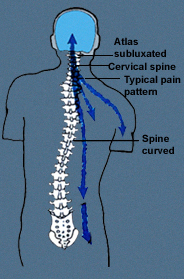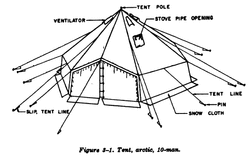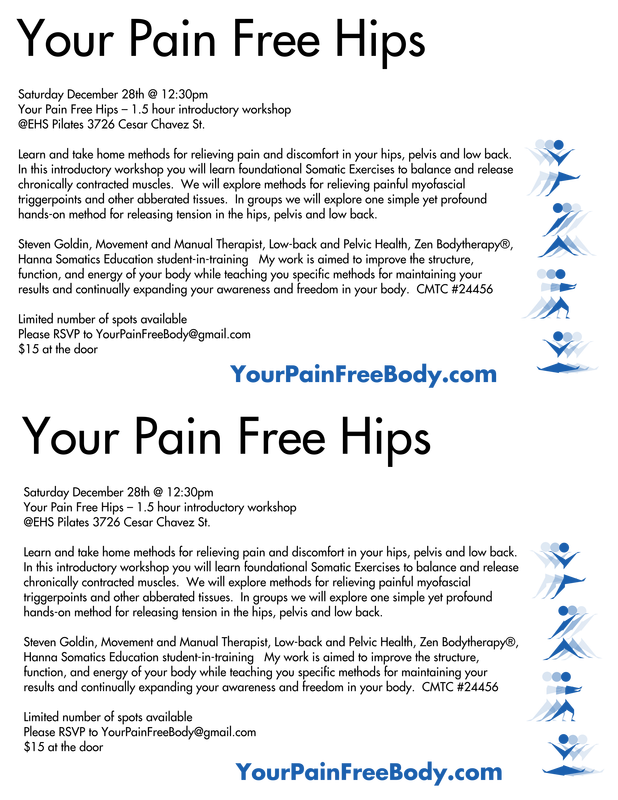 Osteopathy and chiropractic work to change the relationships in the skeletal and joint structure. The benefit of this type of work is clear to anyone one who with a misaligned cervical vertebrae and the subsequent neck pain or someone with a misaligned rib and the associated difficulty in breathing. Move these bones back into correct alignment and the associated pain or dysfunction will lessen. For those injured as a result of an impact—such as a car accident—skeletal and joint adjustments are often the quickest way to get them back on their feet.  Rolfing and other systems of structural integration utilize the same principle; bring the structure into alignment to optimize functioning of the system. However, SI works at different level of the body in order to align the structure. The skeleton is held in place by muscles and the organ of structure—fascia. Muscles, tendons, ligaments, fascia, etc., all form a perfectly tensioned network that creates your shape and determines the ability of your skeleton to move. Often, a chronically contracted muscle or other shortened tissue keeps the skeleton out of alignment. Making adjustments to the skeleton alone is not enough. In order to restore the skeleton and the structure of the body, muscles and fascia need to lengthened and balanced if the change is to last. Further, because these tissues form a body-wide network, balance must be achieved throughout. Think about a tent hung from a central pole with wires spreading the tension evenly throughout the structure. If one line is too loose or too tight it will affect the whole of the structure. This is just as true in the body; it must be balanced as a whole. Sharon shuffled into her massage therapist's office wondering what was wrong with her muscles. After two weeks of working overtime at her job, she had resumed her normal exercise routine. Instead of the relief she expected, she left the gym with more pain and even developed a disturbing complication: tingling in her fingers. Fortunately, her therapist knew the root of the problem was the fact that Sharon's fascia was distorted.
Researchers are learning how massage soothes aching muscles.A massage after vigorous exercise unquestionably feels good, and it seems to reduce pain and help muscles recover. Many people — both athletes and health professionals – have long contended it eases inflammation, improves blood flow and reduces muscle tightness. But until now no one has understood why massage has this apparently beneficial effect.
Sometimes in our fitness practices we hit noticeable plateaus and certain movements may become difficult, painful, or out of reach. This is where manual therapy can benefit you. In all movement practices, whether it is dance, weight lifting, yoga or even Pilates, our old structural and movement patterns can limit our abilities. For example, you might notice tightness in a length of tissue or pain in a joint. You might experience trouble with a movement or a pose, or feel noticeable imbalances across your body. This is often a result of a pattern that is deeply ingrained in the tissues of your body, in your nervous system, and even in your brain. One common example is rounding of the shoulders and a tight and depressed chest as a result of working on your computer and smart phone all day. If you move and work from this unbalanced posture or habitual state you may improperly load your body and improperly activate your muscles and tissues. If this is not corrected you will continue strengthening your body improperly and find yourself more out of balance than when you started. Manual therapy techniques aim specifically to release and correct this dysfunction and restore anatomical balance. This relieves tensions in muscles, tendons and ligaments, correcting distortion and thus returning the overall structure to a healthier state of balance and ease. Moving from this state you will be able to make more immediate and noticeable gains from whatever movement discipline you practice and improve the overall quality of your life.
 In May, I gave a lecture and participatory demonstration for the San Francisco Road Runners Club. This brief demo focused on Injury prevention. Specifically, we focused on Pre-Run Mobilization and Alignment Exercises (not stretching!!), and post-run self-fascial release. The Pre-run exercises are great to add to your routine or as a stand alone warm-up. The post-run Self-fascial release exercises are great for anyone who wants more freedom in their foot and ankle. Here are the exercises I created for this group, keep in mind much more is possible...  Zen-bodytherapy is a system of bodytherapy and somatic education whose goals are to align and balance the structure, function and energy of the body. From Rolf to Feldenkrais to Tanouye Roshi, the pioneer of this work says: “All three are interpenetrating and need to be brought to the same level of alignment and balance”  My work is aimed to correct both the structure and the function of your physical body while teaching you specific methods for maintaining your results and continually expanding your awareness and control over your body. Including a thorough moving and static postural assessment, we begin by releasing restrictions in your body paying particular attention to the symptomatic pain you are experiencing. Hi! Wecome to YourPainFreeBody.com, the blog of Steven Goldin, CMT, Movement and Manual Therapist.
My blog's focus, in case you haven't already guessed, is musculoskeletal pain. In these posts you will find information and practical suggestions on how to reduce pain in your body. Please enjoy and use wisely! |

